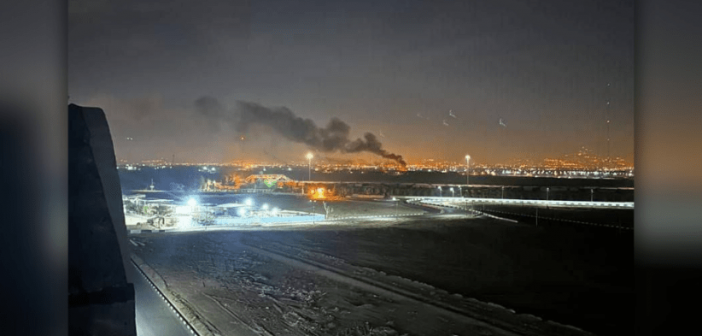Early on October 26, 2024, Israel launched an extensive air strike on Iran, deploying a fleet of 100 advanced fighter jets, including F-35s, F-15Is, and F-16Is, targeting key Iranian military assets across 20 installations. The operation, executed in three waves, aimed to neutralize Iran’s radar systems, missile arsenals, and drone facilities. This escalation followed Iran’s October missile attacks on Israel, spurring Israel to undertake this large-scale offensive to degrade Iran’s strategic capabilities significantly.
.Strategic Significance
Israel’s operation reflects a high-stakes response within the broader global struggle against state-sponsored militancy and terrorism. By using precision air strikes, Israel minimized collateral damage while sending a powerful message about its capacity to retaliate with swift, calculated force. The use of 100 jets underscores the depth of Israel’s air force and its advanced logistical coordination over long-range missions. The chosen targets—missile and drone facilities—reveal Israel’s intelligence focus on weakening Iran’s aerial threat potential. Additionally, the shutting down of airspaces over Iran, Iraq, and Syria highlights the operation’s diplomatic ramifications, affecting international flights and underscoring the tensions now rippling across the Middle East.
Tactical Aspects
The attack leveraged multi-layered technology, including F-35 Adir jets’ stealth capabilities, combined with Israel’s Rampage missiles, a highly accurate long-range missile developed for stand-off air-to-ground operations. The coordinated waves of attacks were timed to first disable Iran’s air defense systems, followed by sequential strikes that neutralized the main targets. Such tactics required substantial real-time intelligence, integration of air and missile units, and strategic precision.
Lessons for India
Israel’s airstrike offers key insights for India, which faces similar security concerns from regional adversaries. Here are the primary takeaways:
- Precision and Layered Response: Israel’s strategic execution showcases the value of pre-emptive, multi-wave strikes that aim to dismantle offensive capacities. For India, this illustrates the efficacy of using layered, sequential tactics to neutralize adversarial infrastructure without engaging in protracted conflict.
- Technology Integration: The deployment of F-35 stealth fighters and Rampage missiles highlights the significance of advanced weapons technology. India could benefit from prioritizing the integration of cutting-edge drones, missiles, and stealth aircraft to maintain a defensive edge in similar confrontations.
- Intelligence and Real-Time Coordination: Israel’s detailed knowledge of Iranian military assets and coordinated strikes reflect a robust intelligence-gathering mechanism. India could benefit from enhancing its intelligence-sharing frameworks, both domestic and international, to effectively manage and respond to asymmetric threats along its borders.
- Diplomatic Acumen: Israel informed key international allies in advance, demonstrating the importance of diplomatic tact when engaging in high-stakes operations. India can leverage similar strategies to gain global support or mitigate diplomatic repercussions when addressing cross-border threats.
Conclusion
Israel’s airstrike against Iran emphasizes the importance of rapid, decisive action, coupled with advanced military capabilities, to protect national interests. This operation serves as a powerful example of how preemptive air power, when used strategically, can achieve significant security gains without prolonged confrontation. As India contends with its own regional challenges, the tactics and technology employed by Israel offer invaluable lessons in reinforcing national defense through innovation, intelligence, and strategic precision.






